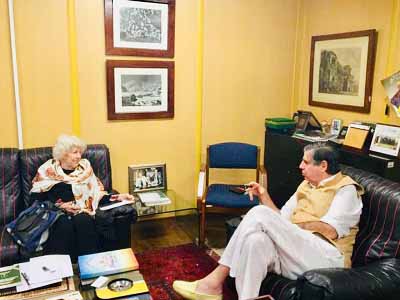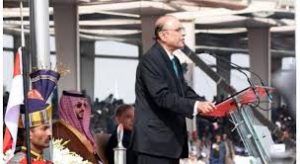Banbhore Archaeological will get UNESCO recognition soon, hopes Ambassador Stefano Pontecorvo

Islamabad: Italy’s ambassador to Pakistan Stefano Pontecorvo on Wednesday expressed the optimism that Banbhore Archaeological site in Sindh will get UNESCO Heritage site recognition soon.
“Discussed with Professor Valeria Piacentini progress on the Banbhore Archeological site in Sindh . She has been active there for years,” he said.
The envoy added: “Incredible town centre of an ancient system. Hopefully will get the UNESCO Heritage site recognition soon. Italy is there to help.”
Ambassador Pontecorvo said Italy considered Pakistan a great friend and desired to enhance cooperation in all sectors.
Bhanbhore or Bhambhore is a city dating to the 1st century BCE located in modern-day Sindh, Pakistan. The city ruins lie on the N-5 National Highway, east of Karachi.
It dates back to the Scytho-Parthian era and was later controlled by Muslims from the 8th to the 13th century, after which it was abandoned.
Remains of one of the earliest known mosques in the region dating back to 727 AD are still preserved in the city. In 2004, Department of Archaeology and Museums Pakistan submitted the site for UNESCO World Heritage Sites.
On 23 April 2014, Sindh government announced to make a new division (consisting of Thatta, Badin and Sujawal) with the name Bhanbhore Division to highlight historical importance of the site.
Some archaeologist and historians suggest that Bhanbhore is the historical city of Debal, which the Arab general Muhammad bin Qasim conquered in 711–712 after defeating Raja Dahir, the last Hindu ruler of Sindh.
However, this identification has not yet been confirmed, though numerous research and excavation works have been carried out to link the two cities.
Preliminary excavations in the area were first done by Ramesh Chandra Majumdar in 1928 and later by Leslie Alcock in 1951. Pakistani archaeologist Dr F.A. Khan conducted extensive studies and excavations in the site from 1958 to 1965.
In March 2012, the Culture Department of Government of Sindh organised the first International Conference on Bhanbhore, where different experts and archaeologists presented their research on the site.
Bhanbhore may also have been known as Barbari or Barbaricon to the Greeks and through the centuries, but it has not yet been proven that these historical cities are the same.
Archaeological findings show that the city consisted of an enclosed area surrounded by a stone and mud wall. The citadel was divided into eastern and western sections by a fortified stone wall in the center.





